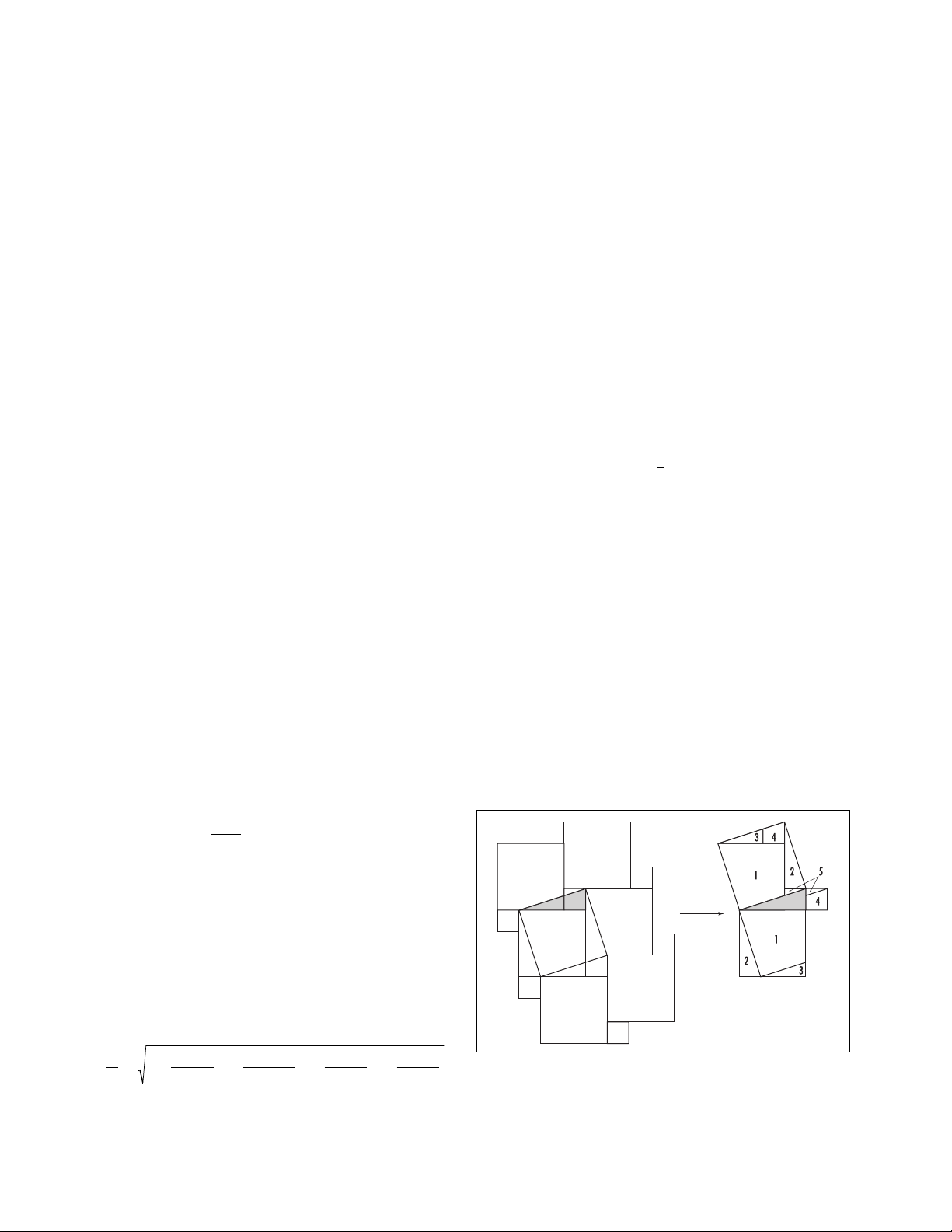
474 spherical triangle
Pythagoras’s theorem
a
–
θ
Riemann and Klein proved that all but the fifth of
E
UCLID
’
S POSTULATES
hold in this model and, moreover,
that this model is consistent (that is, free of
CONTRA
-
DICTION
s). This establishes that the parallel postulate
cannot be logically deduced as a consequence of the
remaining axioms proposed by Euclid.
In spherical geometry all angles in triangles sum to
more than 180°, and the ratio of the circumference of
any circle to its diameter is greater than π(and this
value varies from circle to circle).
See also E
UCLIDEAN GEOMETRY
;
HYPERBOLIC GEOM
-
ETRY
; P
LAYFAIR
’
S AXIOM
.
spherical triangle A three-sided figure on the surface
of a
SPHERE
bounded by the arcs of three great circles is
called a spherical triangle. Unlike plane triangles, the
angles in a spherical triangle do not sum to the con-
stant value of 180°. In fact, the sum of angles is always
greater than 180°and can be as great as 540°. (This
occurs when all three sides of the spherical triangle lie
on the same great circle.)
A right spherical triangle has at least one right angle.
A birectangular triangle contains two right angles, and a
trirectangular triangle has three right angles. (For
instance, any triangle that connects the North Pole to
two points on the equator of the Earth is birectangular.
Such a triangle can also be trirectangular if the points on
the equator are positioned appropriately.) A spherical
triangle with no right angles is called oblique.
If the angles of a spherical triangle are A, B, and C,
measured in degrees, then the surface area of the trian-
gle is given by the formula:
Here Ris the radius of the sphere. The quantity A+ B
+ C– 180, usually denoted E, is called the spherical
excess of the triangle. If the three side-lengths of the tri-
angle are given by a, b, and c, then the spherical excess
can also be computed via the following remarkable for-
mula discovered by Swiss mathematician Simon
Lhuilier (1750–1840):
spiral of Archimedes (Archimedean spiral) Studied
by the great A
RCHIMEDES OF
S
YRACUSE
(ca. 287–212
B
.
C
.
E
.) in his work On Spirals, an Archimedean spiral is
the curve traced out by a point rotating about a fixed
point at a constant angular speed while moving away
from that point at a constant speed. (For example, it is
the path traced by a fly walking radially outward from
the center of a uniform rotating disc.) The equation of
such a spiral has a simple form in
POLAR COORDINATES
:
r= aθ
where ais a positive constant.
A curve given by an equation of the form r= is
called a hyperbolic spiral. These curves were studied by
Johann Bernoulli of the famous B
ERNOULLI FAMILY
.
Curves of the form appear as tightly wrapped
spirals. A curve given by logr= aθis called a logarith-
mic spiral.
See also
GOLDEN RATIO
.
square In geometry a square is a planar figure with
four equal straight sides and four interior right angles.
It is simultaneously a
RECTANGLE
, a
PARALLELOGRAM
,
and a rhombus.
A square with side-length xhas
AREA
x×x= x2,
which explains the term squaring for the operation of
raising a number or a variable to the second power.
Squares are solutions to
ISOPERIMETRIC PROBLEMS
of the following classic type:
ra
n
=θ
1
tan tan( )tan( )tan( )tan( )
E abc abc abc abc
44444
=++ −++ −+ +−
area =++−
()
πRABC
2
180 180